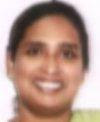One in 100 women attempted suicide this year in Goa: Study
Preetu Nair | TNN
Panaji: A study has found that nearly one in every 100 women, aged between 18 and 50 years, attempted suicide in the last 12 months in Goa. The frequency of suicide attempts is higher in young adults aged between 16 and 24 years.
The study on suicidal behaviour in the state was conducted by Sangath, an NGO working in health care. It was recently published in leading international medical journals.
“There are more suicide deaths every year in Goa than due to injuries or health-related problems,” said Dr Vikram Patel, professor of International Mental Health at the London School of Hygiene and Tropical Medicine, who led the Goan study.
The study found that almost one in 150 young people in Goa attempted suicide during a three month period. If these rates were applied to the state’s population, this would mean that between 1500 and 4000 women aged between 18 and 50 years will attempt suicide over a year’s period, while about 1000 to 2600 young adults will attempt it during any given three month period.
The findings also confirmed those of the National Crime Records Bureau’s latest figures of suicides in the country that reveal that Goa has a reported suicide rate of 16.9, much above the n at i o n a l average of 10.8.
Official f i g u re s available with the Goa police too show that in 2007 about 250 people committed suicide, but the number of people attempting suicide in the state is much higher, said police sources.
“Suicide is the leading cause of unnatural death in the country. Community studies of the cause of death show that actual suicide rates may be five to 10 times higher than reported by the police,” said Patel.
The study revealed that gender disadvantages experienced by women and interpersonal violence are the major social determinants that drive young people and women to commit suicide in Goa. Apart from these social factors, depressive disorders and chronic physical health conditions or disabilities increase the risk of suicidal beh av i o u r, the study noted.
Divided into two segments, the Stree A ro g ya S h o d h study was a longitudinal study of 2494 women aged 18 to 50 years, randomly selected from the catchment area of Aldona primary health centre, while the Yuva Mitr study was a cross-sectional survey of 3664 young adults aged between 16 and 24 years in rural and urban communities in South Goa.
The two studies researched the health of populations who are disadvantaged or who are the focus of national health programs and they addressed a wide range of suicidal behaviours from thinking about ending one’s life to attempting suicide, besides examining roles of indicators of socio-economic disadvantage such as poverty, minority or migrant status, gender violence, mental illness and physical ill-health.
“Our study points to specific actions that should be taken to reduce suicides,” Patel said. Stating that the best way to prevent suicides would be by effective implementation of policies and programs to counter interpersonal violence, the study added, “Individual level interventions for reducing interpersonal violence and treating depression, especially in high-risk groups such as married women and young adults, delivered through health programs targeting young people and women is essential; in addition, services for depression management and crisis intervention should be made available in all primary health centres and other community based agencies in the state.”
December 31, 2008, The Times of India, Goa edition
Monday, January 05, 2009
One in 100 women attempted suicide this year in Goa: Study
Labels:Goa;Journalist;Journalism;India
women;Rights;Women's Commission;Gender;Goa;Journalist;Journalism;Goa;India
Subscribe to:
Post Comments (Atom)







No comments:
Post a Comment